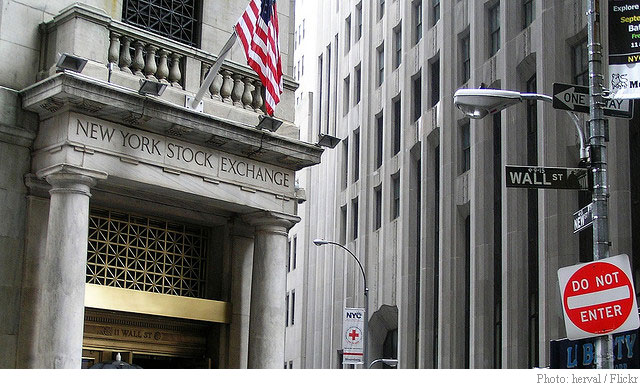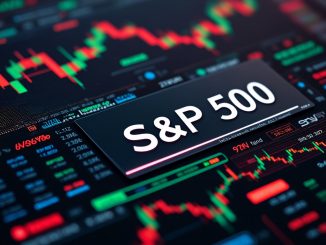Every time there is a major market selloff–like now–there is a Casablanca-like rush to round up the usual suspects. Treasury Secretary Steven Mnuchin blamed the Volcker Rule and HFT. This WSJ article blames algos (including HFT), but throws the kitchen sink in for good measure.
Truth be told, virtually every major market drop is unexplained at the time, and even well after, which only spurs the search for villains and scapegoats. There was no obvious spark for the Crash of ’87, and in the years since, many suspects have been named but none have been convicted. The same is true of the Crash of ’29. Perhaps the best effort–interesting, but not definitive–is George Bittlingmayer’s attribution of Black Tuesday to an unexpected shift in antitrust policy under the Hoover administration. But that came 65 years after the event!
The most recent selloff is no exception. The WSJ article lists a variety of bearish developments, but any such exercise smacks of post hoc, ergo propter hoc “reasoning.” Further, the article quotes various people who claim that the price decline is difficult to square with fundamental economic data–welcome to the club! The same is true for 1987, 1929, and other major declines. Recall Paul Samuelson’s aphorism: the stock market predicted 10 out of the last 5 recessions.
Part of the difficulty is that stock prices depend on expected cash flows, and expected returns, both of which can vary due to factors that are difficult to observe in public data. Asset pricing economists have a lot of theories of time varying expected returns–hinging on theories of time varying risk premia–none of which have strong empirical support. Modest changes in risk premia/expected returns can cause big valuation changes. Recent conditions (political/geopolitical risk, monetary policy changes) plausibly have affected risk premia, but our ability to map these relationships is virtually nonexistent, so at best we can formulate largely untestable hypotheses.
And untestable hypotheses are effectively speculations and opinions, and like certain body parts, everybody has one.
Given these realities, most major asset price movements are difficult to explain.
I vividly remember in the aftermath of the 1987 Crash, when I was a PhD student at Chicago. Gene Fama distributed a Mandelbrot article to all PhD students. The article presented a simple model in which long periods of price increases are followed by crashes. As I recall, the essence of the model was that if good news was received today, it was likely that there would be good news tomorrow, but if good news was not received today, the likelihood of receiving good news tomorrow was lower. In essence, it is a regime switching model, and a switch in from a good news regime to a bad news regime leads to a big valuation change, due to the transition probabilities.
Fama’s point in distributing the article was to emphasize that discontinuous changes in prices are not inconsistent with a “rational” market. Seemingly small fundamental shifts can lead to big price changes.
Again, a hypothesis–and a virtually untestable one.
What about blaming algos, a la Mnuchin and the WSJ? Well, blaming HFT–directly, anyways–makes no sense. Yes, HFT is programmed to respond to market signals, but it is negative feedback by nature. It tends to be stabilizing, not de-stabilizing.
There may be an indirect connection: HFT liquidity supply can dry up when order flow becomes toxic, and the decline in liquidity makes prices more sensitive to order flow, leading to larger price movements. The Flash Crash is a classic example of this. But that’s not unique to HFT. It is inherent to market making, and HFT basically puts what is in a market maker’s (e.g., old-time floor trader’s) synapses into code. Market makers pulling back–or shutting down altogether–occurred long before markets went electronic, and before anybody even dreamed of HFT.
If liquidity has declined–and the WSJ points to some limited evidence on this point–it is likely a response to market conditions, rather than a cause thereof. It’s something that occurs in almost every period of elevated volatility. It’s more of an effect of some common cause than an independent exogenous cause.
Further, by virtually every measure, the increasing automation in markets has led to greater liquidity. Much of the bitching–including in some quotes in the WSJ article–emanates from traditional liquidity suppliers who have lost out to more efficient competitors. Believe me, if order flow had become more toxic, these guys would have pulled back too, and probably more severely than HFT has done.
What can exacerbate market movements is positive feedback trading strategies. Portfolio insurance during the 1987 Crash is a classic example. The WSJ article points at algorithmic momentum trading strategies, and indeed these are positive feedback in nature. But they are not unique to algos: meatware implemented momentum/trend following strategies long before they were embedded in software. Momentum trading is something else that long predates the rise of the machines.
Several quotes in the WSJ article made me laugh. One was: “’Human beings tend not to react this fast and violently.’” Really? Heard of Black Monday? Black Tuesday? Silver Thursday? Black Friday? I’m sure there’s a Color Wednesday to fill in the week, but none comes to mind. Regardless, the point remains: human beings reacted rapidly and violently long before trading machines were even dreamt of.
Here’s another: “Today, when the computers start buying, everyone buys; when they sell, everyone sells.”
This is called “not an equilibrium.”
The bottom line is that the stock market sometimes decline substantially, without any obvious cause. Indeed, the cause(s) of some of the biggest, fastest drops remain elusive decades after they occurred. This is true across virtually every institutional and technological trading environment, making it less likely that any particular selloff is uniquely attributable to a change in technology. Furthermore, large market moves in the absence of any decisive event or piece of news is not inconsistent with market “rationality”, or due to some behavioral anomaly (which is inherently human, by the way).
But humans crave explanations for phenomena like big movements in the stock market, and this demand calls forth supply. That the explanations are for the most part untestable and hence not scientific only means that there is little check on this supply. Anybody can offer an explanation, which likely cannot be proven wrong. So why not? But if you understand that mechanism, you should also understand that you shouldn’t pay much attention.





Leave a Reply